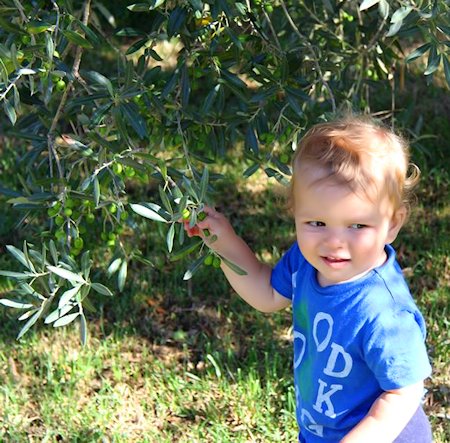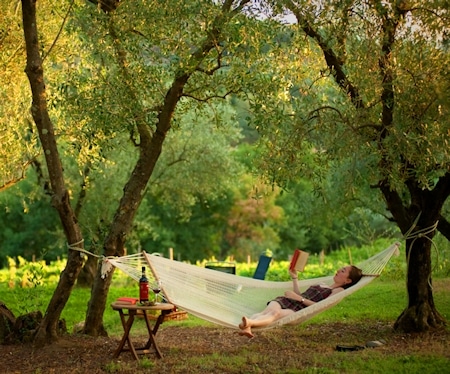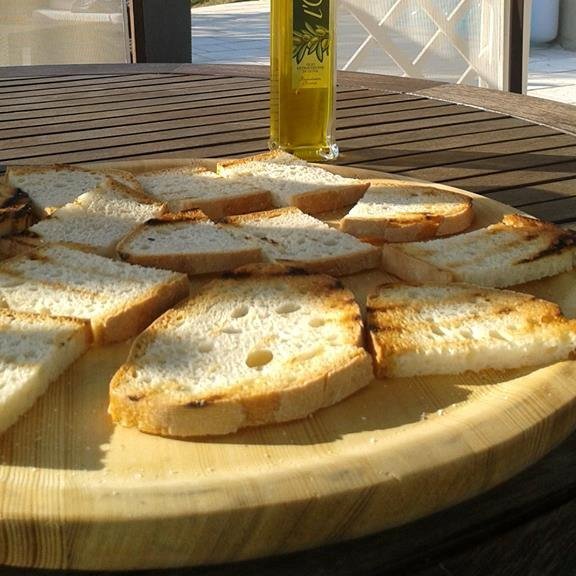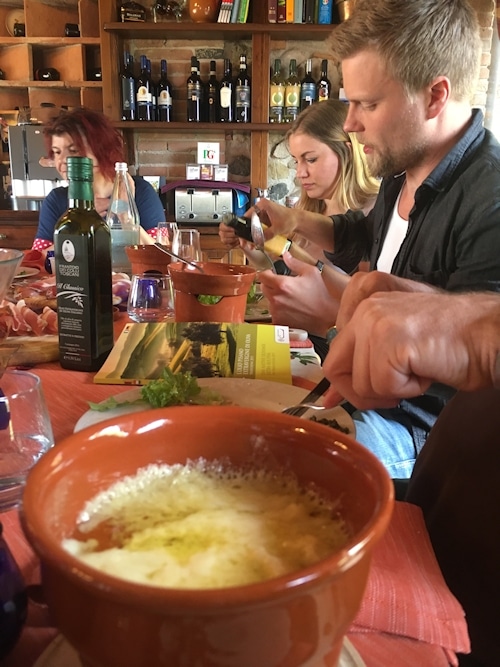Olive oil from Tuscany: Extra virgin, highly sought after by connoisseurs
The great heat is over and after a long summer it is now slowly getting cooler in the hills of Tuscany. The wine has been harvested, but the pickers in the olive groves are still busy harvesting until the end of November/beginning of December.

From harvest to oil
Olive trees are native to many countries in the Mediterranean region. However, the quality of the oil obtained depends heavily on the quality of the soil and the location, on careful harvesting and careful treatment of the fruits as well as the oil extraction. In many places the ripe olives are shaken from the trees or beaten from the tree with poles.
In Tuscany the harvest is usually still very traditional. Here the still half-ripe fruits are picked by hand or stripped from the branches with a kind of coarse comb and collected in very close-meshed nets. Only if healthy and undamaged fruits reach the oil mill as quickly as possible can a high-quality olive oil be pressed from them. The smaller olives are primarily used to produce oil because they contain less water and more oil. The larger fruits are better suited for drying or pickling, but are also used in cooking.

Olives for particularly aromatic oils
In Tuscany, olives of the Frantoio, Razzo, Leccino, Morcone, Moraiolo, Ogliarola and Seggianese varieties are mainly grown. A medium-sized tree bears between ten and 50 kilograms of olives and an experienced picker can produce an average of 35 to 50 kilograms a day by hand. Due to the occasionally very cold winters in Tuscany, yields are nowhere near as high as in areas further south. However, the quality of the soil and the gentle harvesting methods ensure a particularly aromatic olive oil that is particularly sought after by connoisseurs. No wonder, then, that local oil is mostly only available in the region and little, if any, is exported. Tuscan olive oil is not cheap. The effort involved in growing, harvesting and producing is simply too great to waste at a bargain price. Depending on the harvest yield and quality, the price for a liter is between 12 and 20 euros.
Extra virgin olive oil | Olive oil from Tuscany
In the oil mills, the olives are processed into oil immediately after they are harvested. On average, 12 to 13 liters of oil are obtained from a hundred kilos of olives. The highest quality level is called “extra virgin olive oil” (Olio extra vergine di oliva). This term may only be used if both the taste and the chemical analysis show no defects. He should too an acid content of less than 0,8% to have. This is the limit set by European and international legislation. In addition, the careful processing of the olives means that the polyphenols - these are antioxidants that are important for human health and the shelf life of the oil - are protected during processing. Only olive oils with a polyphenol content of at least 250-300 mg/kg are considered healthy.
Good olive oil is like good wine
Good olive oil is like good wine: each oil has its own character and tastes earthy-fruity, racy-spicy or delicately mild - but in any case strongly of olive. Very fresh olive oil from Tuscany has a very fine olive aroma with a delicate fruit aroma and a spicy peppery note, which weakens over time. The oil becomes “softer” and “rounder”, but retains its powerful, typically nutty taste, sometimes with a mild hint of almonds and pine nuts. The color can range from light to golden yellow to a strong olive green. Olive oil has a very long shelf life without going rancid. If stored well (preferably in a dark cellar at around 16° C), olive oil from Tuscany usually lasts for one and a half years.

Origin information
The EU requires an indication of origin for virgin olive oils (virgin and extra virgin). If a country is specified, then the olives must have been harvested and pressed in this country. Otherwise, it must be noted, for example: “made in Italy, from olives harvested in Greece”. If the olives come from different EU countries, the name is: “Mixture of olive oils from the European Union”. Despite all the guidelines, experts assume that a large proportion of Italian olive oil does not come from Italy at all, but was only bottled or processed in Italy. References to this are often only hidden on the labels or not found at all. During a holiday in Tuscany you can experience the taste and quality directly on site - in the olive groves and oil mills - and be completely sure that a really very special oil is being offered.
Get a taste | Olive oil tasting in Tuscany
Who, for example, on the Country house Volterra 2 or the Agriturismo Guardistallo Anyone who has ever tasted freshly pressed olive oil from Tuscany knows the difference to oils from the supermarket. For example, different types of olives are grown on the several hectare estate. After harvesting, the olives are ground into olive pulp in our own oil mill and extracted cold. The result: 100 percent pure, unadulterated “Olio extra vergine di oliva”. And you can taste it! You can also see this for yourself in the kitchen of “Mamma Annamaria”, who personally cooks for her holiday guests in the beautifully situated country house. The olive oil products from Toscana Forum's offer are of course even more! Just ask!




